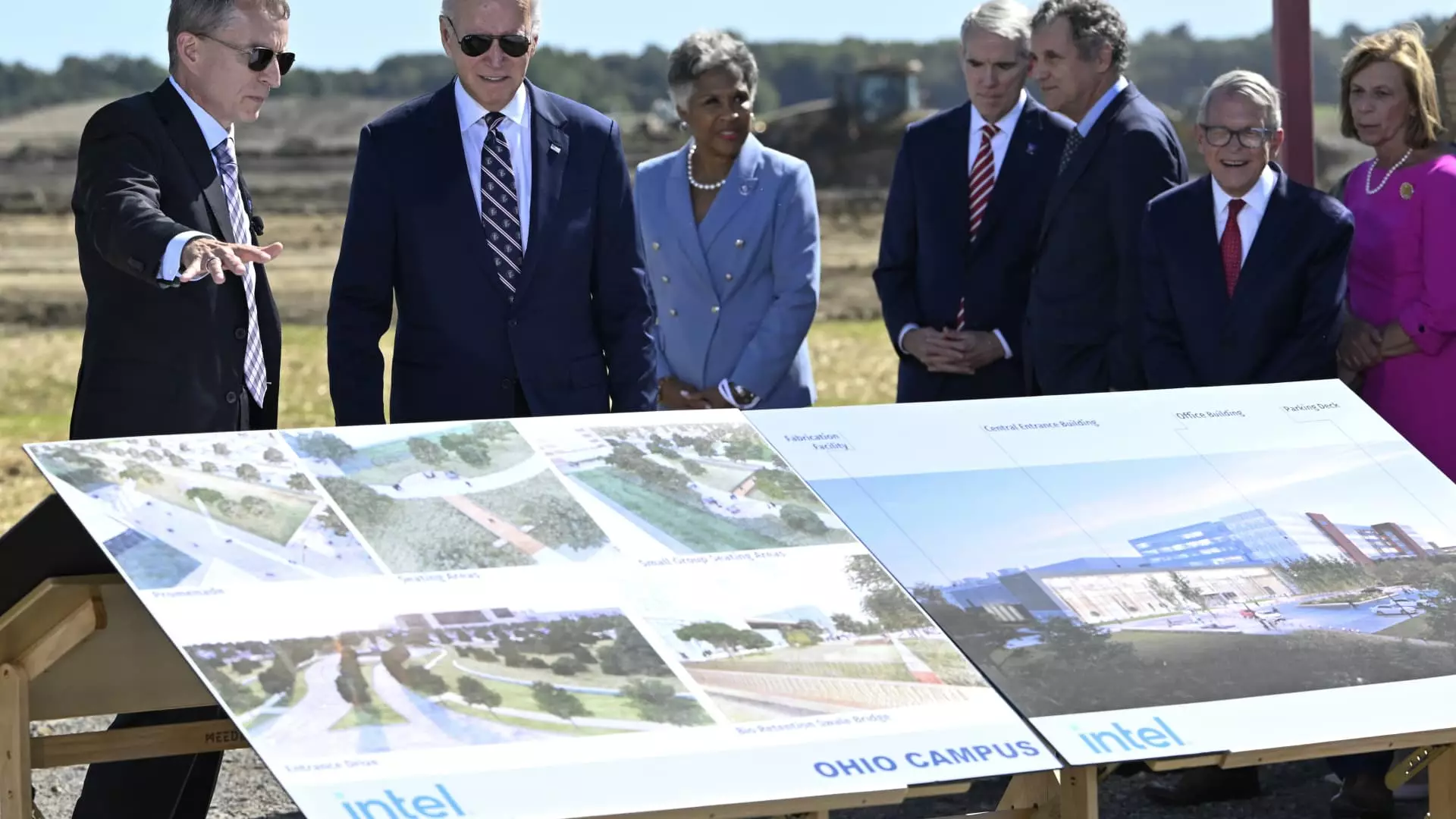Intel Corporation, once the titan of the semiconductor industry, has announced a significant delay in the opening of its highly anticipated manufacturing facility in Ohio. Initially slated to begin production in 2025, the timeline for completion of the first factory has now been pushed back to 2030, with operations starting either that year or the following one. This decision has raised eyebrows as it comes at a time when the semiconductor market is experiencing unprecedented demand, largely driven by advancements in artificial intelligence and other cutting-edge technologies.
The broader implications of this delay cannot be overstated. Intel’s intention to align its production timings with market demand is ostensibly a cautious approach designed to mitigate financial risk. However, given the accelerating pace of technological development and the increasing competition from rivals such as AMD and NVIDIA, this strategy could lead Intel to miss critical market opportunities that may arise in the coming years.
Intel is undoubtedly grappling with an evolving marketplace that has seen it lose its once-dominant position. The company’s struggle to capitalize on the booming AI sector has left it vulnerable, resulting in a precipitous decline in stock value—over 50% last year alone. The announcement of job cuts, amounting to 15% of its workforce, further underscores Intel’s precarious situation. Such drastic measures to streamline operations indicate not only financial distress but also a fundamental re-evaluation of its corporate strategy.
These challenges have intensified scrutiny surrounding CEO Pat Gelsinger’s leadership, culminating in his ousting last December. The company’s leadership changes and strategic missteps have raised concerns about its future direction, prompting discussions in the financial community about potential mergers or acquisitions. These developments emphasize the urgent need for Intel to innovate and adapt rapidly to remain competitive.
Despite these setbacks, Intel is also benefiting from federal support aimed at bolstering semiconductor manufacturing in the United States. The CHIPS and Science Act, under the Biden administration, provides substantial financial resources, including a recent grant of around $8 billion. This governmental backing reflects a recognition of the strategic importance of domestic chip production amid global supply chain vulnerabilities.
With the U.S. striving for semiconductor independence, Intel’s delayed production in Ohio could pose risks not only to its market position but also to national economic interests. If Intel cannot quickly realign its operations to meet market needs, it may face heightened competition from emerging players eager to seize the momentum in the chip industry.
While Intel’s current situation highlights significant challenges and delays, it also represents an opportunity for a strategic pivot. The company must leverage its resources wisely, innovate its product lines, and enhance operational efficiency to navigate this tumultuous landscape effectively. As the semiconductor industry evolves, so too must Intel, lest it become further sidelined in a rapidly advancing sector. The next few years will be crucial in determining whether Intel can reclaim its stature in an increasingly competitive technological arena.

